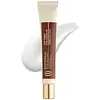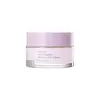What's inside
What's inside
 Key Ingredients
Key Ingredients

 Benefits
Benefits

 Concerns
Concerns

 Ingredients Side-by-side
Ingredients Side-by-side

Collagen Extract 80%
Skin ConditioningGlycerin
HumectantNiacinamide
Smoothing1,2-Hexanediol
Skin ConditioningWater
Skin ConditioningDimethicone
EmollientHydrogenated Polydecene
EmollientButylene Glycol
HumectantTriethylhexanoin
MaskingCetearyl Alcohol
EmollientSodium Acrylate/Sodium Acryloyldimethyl Taurate Copolymer
Emulsion StabilisingPolyglyceryl-3 Methylglucose Distearate
EmulsifyingCyclopentasiloxane
EmollientButyrospermum Parkii Butter
Skin ConditioningDimethicone/Vinyl Dimethicone Crosspolymer
Skin ConditioningIsohexadecane
EmollientSodium Polyacrylate
AbsorbentAmmonium Acryloyldimethyltaurate/Vp Copolymer
Glyceryl Caprylate
EmollientPolysorbate 80
EmulsifyingHydrogenated Lecithin
EmulsifyingGlycosaminoglycans
EmollientAdenosine
Skin ConditioningCarbomer
Emulsion StabilisingSorbitan Oleate
EmulsifyingAllantoin
Skin ConditioningPolysorbate 20
EmulsifyingSteareth-20
CleansingGlycine
BufferingSerine
MaskingGlutamic Acid
HumectantGold
Cosmetic ColorantAspartic Acid
MaskingLeucine
Skin ConditioningAlanine
MaskingPalmitoyl Tripeptide-1
Skin ConditioningLysine
Skin ConditioningArginine
MaskingTyrosine
MaskingPhenylalanine
MaskingThreonine
Proline
Skin ConditioningValine
MaskingN-Hydroxysuccinimide
Skin ConditioningIsoleucine
Skin ConditioningPalmitoyl Tetrapeptide-7
Skin ConditioningPolyglyceryl-10 Stearate
Skin ConditioningHistidine
HumectantCysteine
AntioxidantMethionine
Skin ConditioningLactobacillus Ferment Lysate
Skin ConditioningPanthenol
Skin ConditioningBeta-Glucan
Skin ConditioningPCA
HumectantCaprylyl Glycol
EmollientTaraxacum Officinale Leaf Extract
Skin ConditioningTocopheryl Acetate
AntioxidantSodium Ascorbyl Phosphate
AntioxidantGlycine Soja Protein
EmulsifyingGlyceryl Arachidonate
EmollientAcetyl Hexapeptide-8
HumectantBiotin
AntiseborrhoeicRetinyl Palmitate
Skin ConditioningFolic Acid
Skin ConditioningThiamine Hcl
MaskingPyridoxine
Skin ConditioningCyanocobalamin
Skin ConditioningChlorphenesin
AntimicrobialDisodium EDTA
Collagen Extract 80%, Glycerin, Niacinamide, 1,2-Hexanediol, Water, Dimethicone, Hydrogenated Polydecene, Butylene Glycol, Triethylhexanoin, Cetearyl Alcohol, Sodium Acrylate/Sodium Acryloyldimethyl Taurate Copolymer, Polyglyceryl-3 Methylglucose Distearate, Cyclopentasiloxane, Butyrospermum Parkii Butter, Dimethicone/Vinyl Dimethicone Crosspolymer, Isohexadecane, Sodium Polyacrylate, Ammonium Acryloyldimethyltaurate/Vp Copolymer, Glyceryl Caprylate, Polysorbate 80, Hydrogenated Lecithin, Glycosaminoglycans, Adenosine, Carbomer, Sorbitan Oleate, Allantoin, Polysorbate 20, Steareth-20, Glycine, Serine, Glutamic Acid, Gold, Aspartic Acid, Leucine, Alanine, Palmitoyl Tripeptide-1, Lysine, Arginine, Tyrosine, Phenylalanine, Threonine, Proline, Valine, N-Hydroxysuccinimide, Isoleucine, Palmitoyl Tetrapeptide-7, Polyglyceryl-10 Stearate, Histidine, Cysteine, Methionine, Lactobacillus Ferment Lysate, Panthenol, Beta-Glucan, PCA, Caprylyl Glycol, Taraxacum Officinale Leaf Extract, Tocopheryl Acetate, Sodium Ascorbyl Phosphate, Glycine Soja Protein, Glyceryl Arachidonate, Acetyl Hexapeptide-8, Biotin, Retinyl Palmitate, Folic Acid, Thiamine Hcl, Pyridoxine, Cyanocobalamin, Chlorphenesin, Disodium EDTA
Water
Skin ConditioningButylene Glycol
HumectantGlycerin
HumectantCaprylic/Capric Triglyceride
MaskingCetearyl Alcohol
EmollientVinyldimethicone
Cetearyl Olivate
Sorbitan Olivate
EmulsifyingIsononyl Isononanoate
EmollientLimnanthes Alba Seed Oil
Skin ConditioningBetaine
HumectantButyrospermum Parkii Butter
Skin ConditioningSimmondsia Chinensis Seed Oil
EmollientVaccinium Macrocarpon Fruit Extract
AstringentEclipta Prostrata Extract
Skin ConditioningLaminaria Japonica Extract
Skin ProtectingEclipta Prostrata Leaf Extract
Skin ConditioningMelia Azadirachta Leaf Extract
Skin ConditioningVitis Vinifera Seed Oil
EmollientSodium Hyaluronate
HumectantOlea Europaea Fruit Oil
MaskingPelargonium Graveolens Flower Oil
MaskingLavandula Angustifolia Oil
MaskingAnthemis Nobilis Flower Oil
MaskingCitrus Aurantium Dulcis Peel Oil
MaskingJuniperus Mexicana Oil
MaskingHydrogenated Lecithin
EmulsifyingAmmonium Acryloyldimethyltaurate/Vp Copolymer
Euphorbia Cerifera Wax
Hydrogenated Polydecene
EmollientSodium Polyacryloyldimethyl Taurate
Emulsion StabilisingDimethicone/Vinyl Dimethicone Crosspolymer
Skin ConditioningDimethiconol
EmollientTrisiloxane
Skin ConditioningXanthan Gum
EmulsifyingAdenosine
Skin ConditioningDisodium EDTA
Cyamopsis Tetragonoloba Gum
Emulsion StabilisingAgar
MaskingSodium Polyacrylate
AbsorbentGlutathione
Squalane
EmollientCholesterol
EmollientTocopherol
AntioxidantCyanocobalamin
Skin ConditioningTitanium Dioxide
Cosmetic ColorantPalmitic Acid
EmollientStearic Acid
CleansingCollagen
MoisturisingMoringa Oleifera Seed Oil
EmollientLeuconostoc/Radish Root Ferment Filtrate
AntimicrobialFructooligosaccharides
HumectantResveratrol
AntioxidantBakuchiol
AntimicrobialBeta-Glucan
Skin ConditioningCeramide NP
Skin ConditioningHydrolyzed Hyaluronic Acid
HumectantAluminum Hydroxide
EmollientTriethoxycaprylylsilane
1,2-Hexanediol
Skin ConditioningHydroxyacetophenone
AntioxidantEthylhexylglycerin
Skin ConditioningCaprylyl Glycol
EmollientWater, Butylene Glycol, Glycerin, Caprylic/Capric Triglyceride, Cetearyl Alcohol, Vinyldimethicone, Cetearyl Olivate, Sorbitan Olivate, Isononyl Isononanoate, Limnanthes Alba Seed Oil, Betaine, Butyrospermum Parkii Butter, Simmondsia Chinensis Seed Oil, Vaccinium Macrocarpon Fruit Extract, Eclipta Prostrata Extract, Laminaria Japonica Extract, Eclipta Prostrata Leaf Extract, Melia Azadirachta Leaf Extract, Vitis Vinifera Seed Oil, Sodium Hyaluronate, Olea Europaea Fruit Oil, Pelargonium Graveolens Flower Oil, Lavandula Angustifolia Oil, Anthemis Nobilis Flower Oil, Citrus Aurantium Dulcis Peel Oil, Juniperus Mexicana Oil, Hydrogenated Lecithin, Ammonium Acryloyldimethyltaurate/Vp Copolymer, Euphorbia Cerifera Wax, Hydrogenated Polydecene, Sodium Polyacryloyldimethyl Taurate, Dimethicone/Vinyl Dimethicone Crosspolymer, Dimethiconol, Trisiloxane, Xanthan Gum, Adenosine, Disodium EDTA, Cyamopsis Tetragonoloba Gum, Agar, Sodium Polyacrylate, Glutathione, Squalane, Cholesterol, Tocopherol, Cyanocobalamin, Titanium Dioxide, Palmitic Acid, Stearic Acid, Collagen, Moringa Oleifera Seed Oil, Leuconostoc/Radish Root Ferment Filtrate, Fructooligosaccharides, Resveratrol, Bakuchiol, Beta-Glucan, Ceramide NP, Hydrolyzed Hyaluronic Acid, Aluminum Hydroxide, Triethoxycaprylylsilane, 1,2-Hexanediol, Hydroxyacetophenone, Ethylhexylglycerin, Caprylyl Glycol
Ingredients Explained
These ingredients are found in both products.
Ingredients higher up in an ingredient list are typically present in a larger amount.
1,2-Hexanediol is a synthetic liquid and another multi-functional powerhouse.
It is a:
- Humectant, drawing moisture into the skin
- Emollient, helping to soften skin
- Solvent, dispersing and stabilizing formulas
- Preservative booster, enhancing the antimicrobial activity of other preservatives
Adenosine is in every living organism. It is one of four components in nucleic acids that helps store our DNA.
Adenosine has many benefits when used. These benefits include hydrating the skin, smoothing skin, and reducing wrinkles. Once applied, adenosine increases collagen production. It also helps with improving firmness and tissue repair.
Studies have found adenosine may also help with wound healing.
In skincare products, Adenosine is usually derived from yeast.
Learn more about AdenosineAmmonium Acryloyldimethyltaurate/Vp Copolymer (let's call it AAVC for short) is a synthetically created polymer. It's used as a film-forming agent and used to thicken the consistency of products.
AAVC is able to increase the consistency and viscosity of products due to its large molecule size. It also prevents ingredients from separating.
Beta-Glucan is a polysaccharide. It can be derived from the cell walls of seaweed, oats, yeast, and fungi. It hydrates the skin and helps boost your skin's natural barrier.
As an antioxidant, beta-glucan helps fight free-radicals. Free-radicals are molecules that may damage your skin cells, such as pollution.
Studies show this ingredient may be an effective wrinkle reducer as it can deeply penetrate into skin. It has also been show to help with wound healing.
Learn more about Beta-GlucanButylene Glycol (or BG) is used within cosmetic products for a few different reasons:
Overall, Butylene Glycol is a safe and well-rounded ingredient that works well with other ingredients.
Though this ingredient works well with most skin types, some people with sensitive skin may experience a reaction such as allergic rashes, closed comedones, or itchiness.
Learn more about Butylene GlycolThis ingredient is also known as shea butter. It is an effective skin hydrator and emollient.
Emollients help soothe and soften your skin. It does this by creating a protective film on your skin. This barrier helps trap moisture and keeps your skin hydrated. Emollients may be effective at treating dry or itchy skin.
Shea butter is rich in antioxidants. Antioxidants help fight free-radicals, or molecules that may harm the body. It is also full of fatty acids including stearic acid and linoleic acid. These acids help replenish the skin and keep skin moisturized.
While Shea Butter has an SPF rating of about 3-4, it is not a sunscreen replacement.
Shea butter may not be fungal acne safe. We recommend speaking with a professional if you have any concerns.
Learn more about Butyrospermum Parkii ButterCaprylyl Glycol is a humectant and emollient, meaning it attracts and preserves moisture.
It is a common ingredient in many products, especially those designed to hydrate skin. The primary benefits are retaining moisture, skin softening, and promoting a healthy skin barrier.
Though Caprylyl Glycol is an alcohol derived from fatty acids, it is not the kind that can dry out skin.
This ingredient is also used as a preservative to extend the life of products. It has slight antimicrobial properties.
Learn more about Caprylyl GlycolCetearyl alcohol is a mixture of two fatty alcohols: cetyl alcohol and stearyl alcohol. It is mainly used as an emulsifier. Emulsifiers help prevent the separation of oils and products. Due to its composition, it can also be used to thicken a product or help create foam.
Cetearyl alcohol is an emollient. Emollients help soothe and hydrate the skin by trapping moisture.
Studies show Cetearyl alcohol is non-toxic and non-irritating. The FDA allows products labeled "alcohol-free" to have fatty alcohols.
This ingredient is usually derived from plant oils such as palm, vegetable, or coconut oils. There is debate on whether this ingredient will cause acne.
Due to the fatty acid base, this ingredient may not be Malassezia folliculitis safe.
Learn more about Cetearyl AlcoholCyanocobalamin is the manufactured version of vitamin B12. It has skin soothing, antioxidant, and barrier protecting properties. Topical cyanocobalamin is used to treat skin irritation and atopic dermatitis.
This ingredient is a silicone used to improve the texture of products and absorb oil. It does not get absorbed into the skin.
Like other silicones, Dimethicone/Vinyl Dimethicone Crosspolymer helps condition the skin by creating a barrier. In this sense, it can act as an emollient and trap moisture in.
This ingredient is a type of elastomer.
Learn more about Dimethicone/Vinyl Dimethicone CrosspolymerDisodium EDTA plays a role in making products more stable by aiding other preservatives.
It is a chelating agent, meaning it neutralizes metal ions that may be found in a product.
Disodium EDTA is a salt of edetic acid and is found to be safe in cosmetic ingredients.
Learn more about Disodium EDTAGlycerin is already naturally found in your skin. It helps moisturize and protect your skin.
A study from 2016 found glycerin to be more effective as a humectant than AHAs and hyaluronic acid.
As a humectant, it helps the skin stay hydrated by pulling moisture to your skin. The low molecular weight of glycerin allows it to pull moisture into the deeper layers of your skin.
Hydrated skin improves your skin barrier; Your skin barrier helps protect against irritants and bacteria.
Glycerin has also been found to have antimicrobial and antiviral properties. Due to these properties, glycerin is often used in wound and burn treatments.
In cosmetics, glycerin is usually derived from plants such as soybean or palm. However, it can also be sourced from animals, such as tallow or animal fat.
This ingredient is organic, colorless, odorless, and non-toxic.
Glycerin is the name for this ingredient in American English. British English uses Glycerol/Glycerine.
Learn more about GlycerinHydrogenated Lecithin is created from the hydrogenation of lecithin (a group of phospholipids). Hydrogenation is a chemical reaction between hydrogen and another element.
This ingredient is an emollient and emulsifier. As an emollient, it helps soften skin by trapping moisture within. As an emulsifier, it prevents oil and water ingredients from separating.
Hydrogenated Polydecene is an emollient. It creates a non-occlusive film on the skin that offers extra protection for your skin barrier.
The texture of Hydrogenated Polydecene ranges from light and silky to rich.
Hydrogenated Polydecene is the end compound of controlled hydrogenation of Polydecene.
Learn more about Hydrogenated PolydeceneSodium Polyacrylate is the sodium salt of polyacrylic acid. It is used as an absorber, emollient, and stabilizer.
This ingredient is a super-absorbent polymer - meaning it can absorb 100 to 1000 times its mass in water. As an emollient, Sodium Polyacrylate helps soften and soothe skin. Emollients work by creating a barrier to trap moisture in. This helps keep your skin hydrated.
Water. It's the most common cosmetic ingredient of all. You'll usually see it at the top of ingredient lists, meaning that it makes up the largest part of the product.
So why is it so popular? Water most often acts as a solvent - this means that it helps dissolve other ingredients into the formulation.
You'll also recognize water as that liquid we all need to stay alive. If you see this, drink a glass of water. Stay hydrated!
Learn more about Water